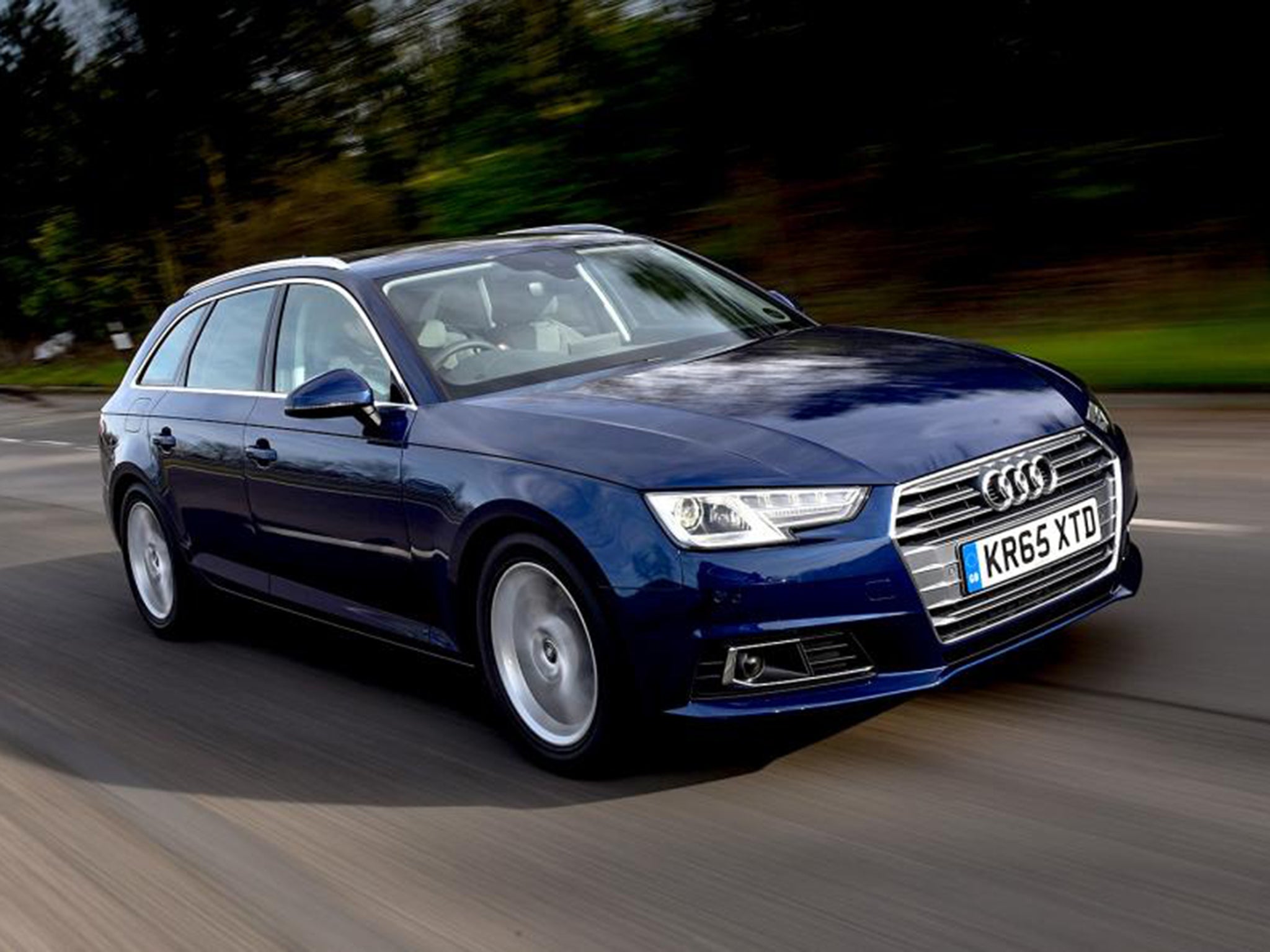Audi A4 Avant 2.0 TDI 150 Ultra Sport, car review: Offering economy and style
Inside it’s the usual luscious cabin and the word ‘economy’ is certainly not on your lips

Your support helps us to tell the story
From reproductive rights to climate change to Big Tech, The Independent is on the ground when the story is developing. Whether it's investigating the financials of Elon Musk's pro-Trump PAC or producing our latest documentary, 'The A Word', which shines a light on the American women fighting for reproductive rights, we know how important it is to parse out the facts from the messaging.
At such a critical moment in US history, we need reporters on the ground. Your donation allows us to keep sending journalists to speak to both sides of the story.
The Independent is trusted by Americans across the entire political spectrum. And unlike many other quality news outlets, we choose not to lock Americans out of our reporting and analysis with paywalls. We believe quality journalism should be available to everyone, paid for by those who can afford it.
Your support makes all the difference.Back in the day, ‘Ultra’ would have been used as a high-performance tag, but now it signals Audi’s economy range. But this isn’t economy as in blue stripes and bargain-basement ingredients. This means that Audi can make a mid-sized estate car which has a claimed economy of 70mpg.
In fact the Ultra label has a choice of diesel engines, a 148bhp or a 187bhp version of the 2.0-litre four-pot. These come with a six-speed manual transmission although a seven-speed dual-clutch auto is an option. We’re testing the lower powered car, which in theory can manage 70.6mpg and 104g/km of CO2.
The more powerful version isn’t far behind though, and the extra £900 it costs gives you more performance and figures of only 68.9mpg and 106g/km. Not a lot in that really. Perhaps that difference is slightly enhanced by trim, since the version we’re testing can come in SE or Sport spec, whereas the more powerful variant only comes in the higher Sport trim.
That Sport spec we tested adds in the lowered suspension from the S line. That makes handling pretty good for an estate car. The payoff is a slightly firm ride quality which is perhaps slightly at odds with the rest of the car. It’s never harsh though, and you can enjoy driving down country roads.
That enjoyment is enhanced by a torque-laden ride. There’s plenty of grunt from as low as 1600rpm, so you don’t need to stir the gearbox too much. At 70mph on the motorway you’ll only be turning the engine over at 1800rpm with the manual box, so this is a quiet and relaxed ride. It can get a bit more frenetic if you’re looking for a sudden overtake, but drive within the limits and you’ll enjoy a serene journey.
The engine is really quiet and refined, never getting breathless or noisy. The only downsides are braking and steering which appear to have a problem communicating with the driver, even though they do their jobs well enough.
Audi A4 Avant 2.0 TDI 150 Ultra Sport
On sale: Now
Price: £31,500
Engine: 4cyl, 1968cc, diesel
Power: 148bhp at 3250-4200rpm
Torque: 236lb ft at 1500-3250rpm
Gearbox: 6spd manual
Kerbweight: 1480kg
0-62mph: 9.2sec
Top speed: 130mph
Economy: 70.6mpg (combined)
CO2/tax band: 104g/km, 18%
Inside it’s the usual luscious cabin and the word ‘economy’ is certainly not on your lips. The already peerless interior gains sat-nav with 3D maps, better sound system and sports seats as some of the additions in Sport trim. Alcantara upholstery adds £1150.
There’s also plenty of space in this estate, certainly enough to match 3 Series or C-Class estates. Access through an electric tailgate and a motorised luggage cover and you have a well-shaped and large cargo area that’s as good as any competition.
This estate may not be quite as good in the handling stakes as the other German competitors but it is a very fine match of high quality and practicality mixed with serious economy. However, a 0-62mph of 9.2sec does show there is a price to be paid in sporting ride. Perhaps that extra £900 for the more powerful version would be good value, as that would give you a 0-62mph time of 7.9sec, without any major loss of economy.
Join our commenting forum
Join thought-provoking conversations, follow other Independent readers and see their replies
Comments